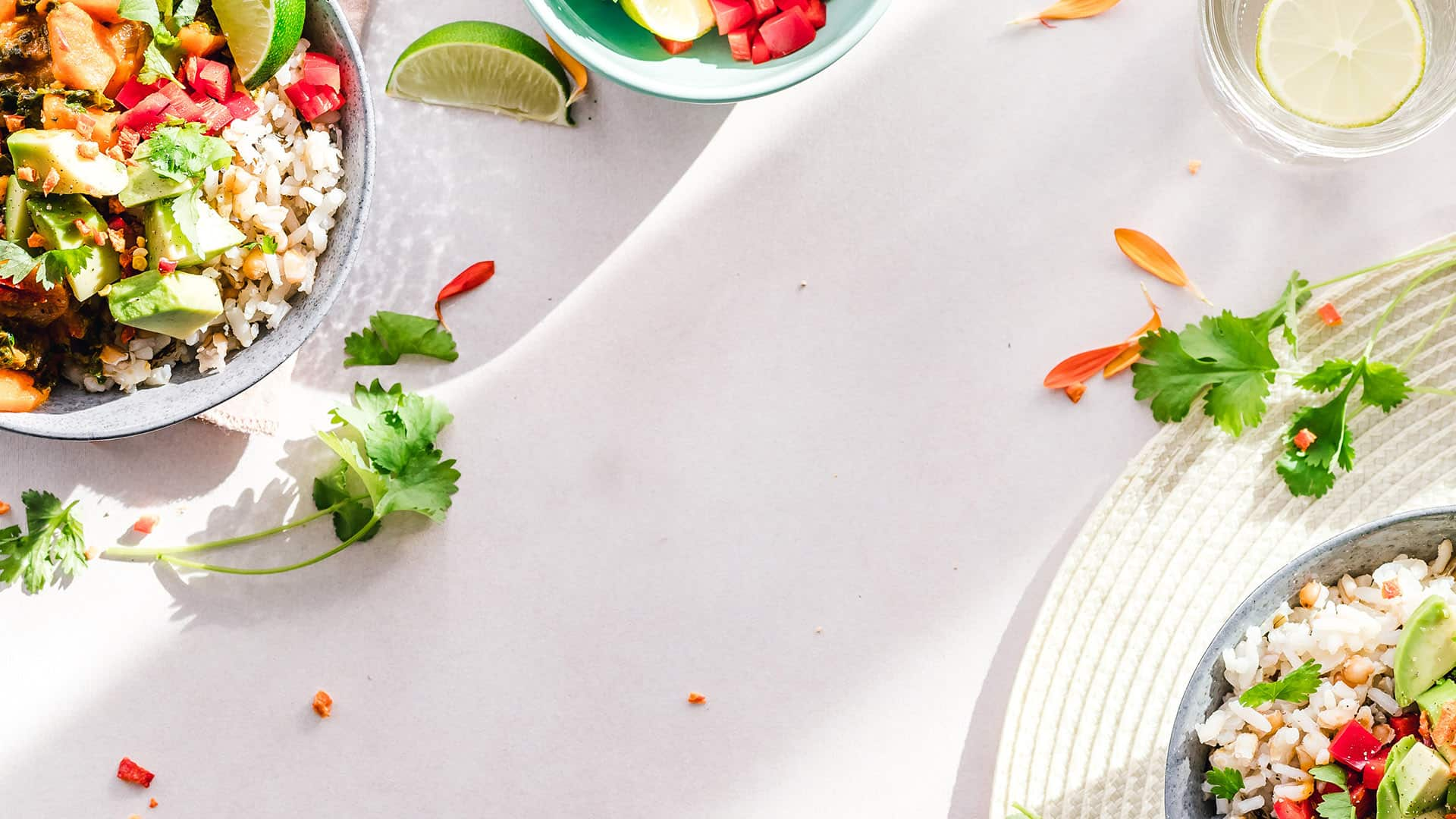
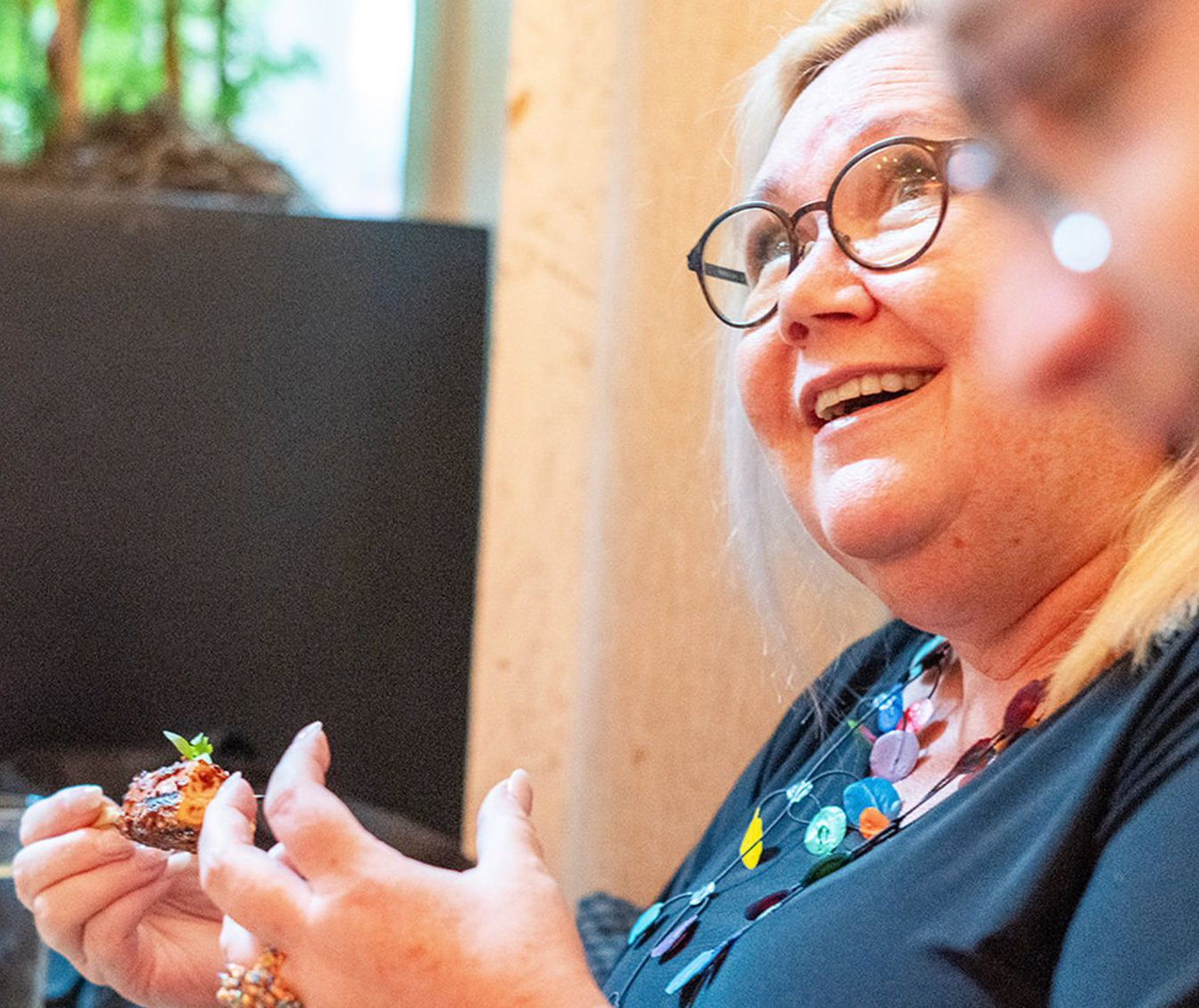
Protein Pioneer: Ira van Elen
The headlines in alt proteins this year have quite rightly been for UPSIDE Foods and GOOD Meat. However, the decades-long efforts of Willem van Eelen, the ‘Godfather of cultivated meat’, will forever be in the history books. Nick Bradley takes some time to reflect with his daughter, Ira van Eelen, who is intent on seeing his dreams become a reality
Within weeks of cell-cultivated chicken products from UPSIDE Foods and GOOD Meat receiving that milestone final clearance from the USDA – and then being served to diners in San Francisco (at Chef Dominique Crenn’s Bar Crenn) and Washington, D.C. (by Chef José Andrés’ at China Chilcano) – the Climate Change Institute at the University of Maine announced a new all-time global average heat record of 17.18°C.
Days after that worrying stat – and to much media attention – scientists at Oxford University announced that, based on their calculations, if UK meat-eaters alone could just cut some of the meat from their diets, it might be the equivalent of taking eight million cars off the roads.

At the same time, with extreme heat lingering over much of Europe, China and the USA (at time of press), one of the foremost climate scientists in the world, Professor Sir Bob Watson, declared the target to limit global warming to 1.5°C will be missed, and that he was even pessimistic about achieving 2°C.
What we eat impacts our planet
Now, even if you’re a cynic, these developments show clearly how what we eat impacts our planet, and it also shows that we are struggling to prevent temperature rises because we aren’t reducing emissions quickly enough. And it shows that, as far as conventional livestock agriculture is concerned, there is an alternative that has the potential to alleviate some of the pressures being placed on our planet.
As an example, cultivated beef – when produced using renewable energy (and that is important) – could cause 92% less global warming and 93% less air pollution, use
up to 95% less land, and 78% less water compared with conventional beef.
Coincidentally, the 17.18°C record set on 4 July would have been Willem van Eelen’s 100th birthday. Widely regarded as ‘the Godfather of cultivated meat’, the impact of Van Eelen’s unwavering belief in ‘growing’ meat without slaughtering an animal was commemorated by GOOD Meat on 5 July with its cultivated chicken served to US diners for the first time.
This was not chicken nuggets and fries though. GOOD Meat’s offering was grilled as kebabs with anticucho sauce, native potatoes, and ají amarillo chimichurri. Among those at the landmark event at China Chilcano was Willem van Eelen’s daughter, Ira van Eelen, a champion in her own right.
Back to the beginning
Willem Frederik van Eelen was born in Indonesia in 1923 to a Dutch doctor who opened a leprosy colony in what was then Dutch territory. Aged just 17, he signed up to fight in World War II, during which time he was captured by the Japanese and sent to prisoner-of-war camps across Indonesia. What he learned during this time of food deprivation, cruelty and hardship would go on to shape the way he viewed the world following the Japanese surrender in August 1945, after which Van Eelen returned to the Netherlands.
“A few years after the war, my father went on to study psychology at the University of Amsterdam, and during his first year, he came across a group of researchers in a lab using stem cell technology to grow cells in a tank, hoping to create new skin for burn victims or even new organs,” Van Eelen recounts. “But he looked at that piece of tissue and wondered whether he could cook and eat it!”
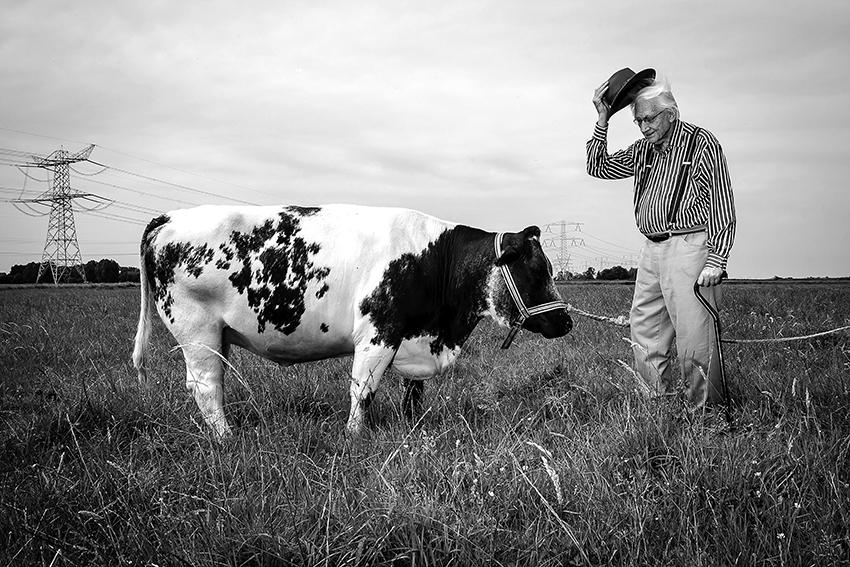
That chance encounter would start a decades-long quest to turn that thought into a reality.
“My mother died when I was 11,” Van Eelen continues, when asked what her father was like as a person. “So, it was very much me and my dad in the world. He wasn’t the picture-book dad, but I always felt rich to be around such an inspiring person. He was a lot of fun, too.”
After graduating, Van Eelen went to medical school until he was advised by a tutor that, if he was serious about his notion of growing meat in laboratories, he would have to raise cash to finance ongoing research.
He did manage to find a handful of scientists who believed there was something in his concept but, ultimately, what ensued until the early 1980s was decades of frustration for the young Dutchman – that what seemed an obvious pathway to feed the planet sustainably was not taken seriously by the scientific community at large.
You see, Van Eelen, a visionary in more ways than one, foresaw the challenges of feeding a growing population and the environmental implications of increasing meat consumption long before such concerns gained widespread recognition. “He was well aware that China and Southeast Asia were becoming places where people were going to eat meat a lot more than they did at the time,” Van Eelen explains. “I remember once being in a room with him and some friends and doing the math on a paper napkin: we concluded that we would probably need four planets if China and Southeast Asia started eating as much meat as we did in the west.”
As an aside, Van Eelen’s father was also appalled at the amount of antibiotics used in intensive agriculture, and he cared passionately about the way animals were treated. It made sense to him that growing meat without inflicting pain made sense on so many different levels.
I have had a lot of good fortune to know a lot of heroes in my life. Of course, it starts with my dad, but for me Peter (Verstrate) and later of course Henk Haagsman, Joost Texeira de Mattos, Mark Post, were all key figures
Like so many out-of-the-box ideas, though, skepticism was a big hurdle to overcome. “He was perceived as a very charming but crazy guy,” Van Eelen recalls. At times, he was even mocked. “He had ideas on a daily basis, not only around cultivated meat, but he was a sort of constant visionary... and funnily enough many of his ideas actually happened years and years later.”
Van Eelen, though, didn’t give up. “Eventually, he would get out a phonebook, jump in his car, and start visiting universities specializing in stem cell research,” Van Eelen says of her father’s determined nature. “More often than not he found it difficult to convince people that his idea had potential. Some of those he spoke to were even afraid to agree with him just in case it ruined their careers!
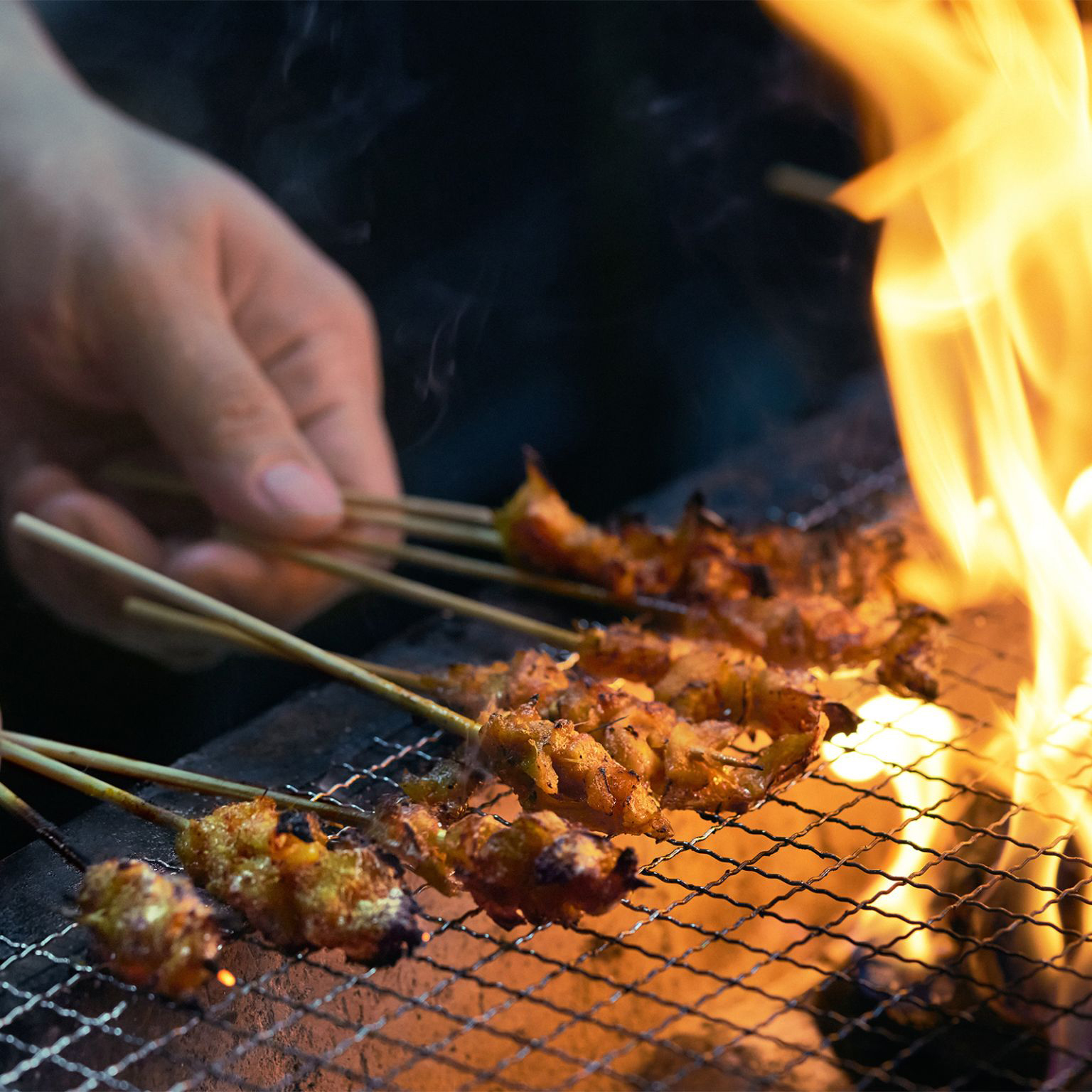
“You have to appreciate that sustainability wasn’t a topic back then,” Van Eelen continues. “Climate change might have been discussed a little in academic circles, but nobody really worried about it, nor were they concerned with meat consumption, antibiotics, and plastics. It was all about ‘Ban the Bomb’ and bringing down the Berlin Wall. So, you can imagine the reaction that my father received, going around trying to convince people to make steaks from cells!”
Undeterred, though, and little by little, he began to gain traction. A breakthrough came in 1993 when Van Eelen and a small group of like-minded individuals wrote a proof-of-concept. In 1994, he found an academic who offered to write patents for him. The first of these were approved in 1996/1997 and the final ones in 1999. “All of a sudden, people started saying, ‘Oh, you have a proof-of-concept? You have patents? We’d better start taking this guy seriously’.”
With that IP secured and a bit more momentum, he was also advised to send in an application to a new Netherlands grant system, and involve some universities and commercial partners, to see if he could accelerate progress.
Close encounters
“There are many people in this story who are important,” stresses Van Eelen. “One of them was a manager at Meester Stegeman, a meat company that was a subsidiary of the Sara Lee Company. My father just turned up without an appointment, and the man was kind enough to speak with him. What was magical was that this guy was also a food technologist, and only the day before had visited a lab with his wife, and had seen cells being grown. That man was Peter Verstrate, who would go on to co-found Mosa Meat.
“I have had a lot of good fortune to know a lot of heroes in my life,” admits van Eelen. “Of course, it starts with my dad, but for me Peter (Verstrate) and later of course Henk Haagsman, Joost Texeira de Mattos, Mark Post, were all key figures. I liken it to that famous little film where you see the weird guy dancing around, but it only becomes a movement when other people start dancing with him.”
Of course, it would have been the perfect fairy tale for Van Eelen’s technology to have been picked up from there and for him to go on to huge success, more importantly proving many of his doubters wrong. It didn’t pan out that way.
The truth is, he invested almost everything he owned into the project and, according to his daughter, would sometimes even embellish certain details to obtain funding. “He was ever the optimist, so when he used to say to people [he can crack it in] ‘two years’, ‘five years’, I’m pretty sure he believed that he could. The sad thing, though, is that he never got to see cultivated meat in shops. But he was sure it would happen, and giving up was never an option. He worked on it until he was 90.”
Sadly, Van Eelen passed away in February 2015 at the age of 91. Not only did his daughter mourn the loss of her father; she also mourned the loss of his crazy ideas.
If you look around the world today, who is making meat? It’s not factories, it’s the farmers, it’s animals
Back in the game
Fast forward a few years and Van Eelen had barely given cultivated meat a passing thought. “I then got an email from Josh Tetrick [who at the time was heading up a food company called Hampton Creek], telling me they had purchased my father’s original patents, as well as some other similar IP from Jon Vein. (Willem van Eelen had previously sold his patents to the Los Angeles-based businessman, Vein, in the hope of consolidating their IP and faster progression.)
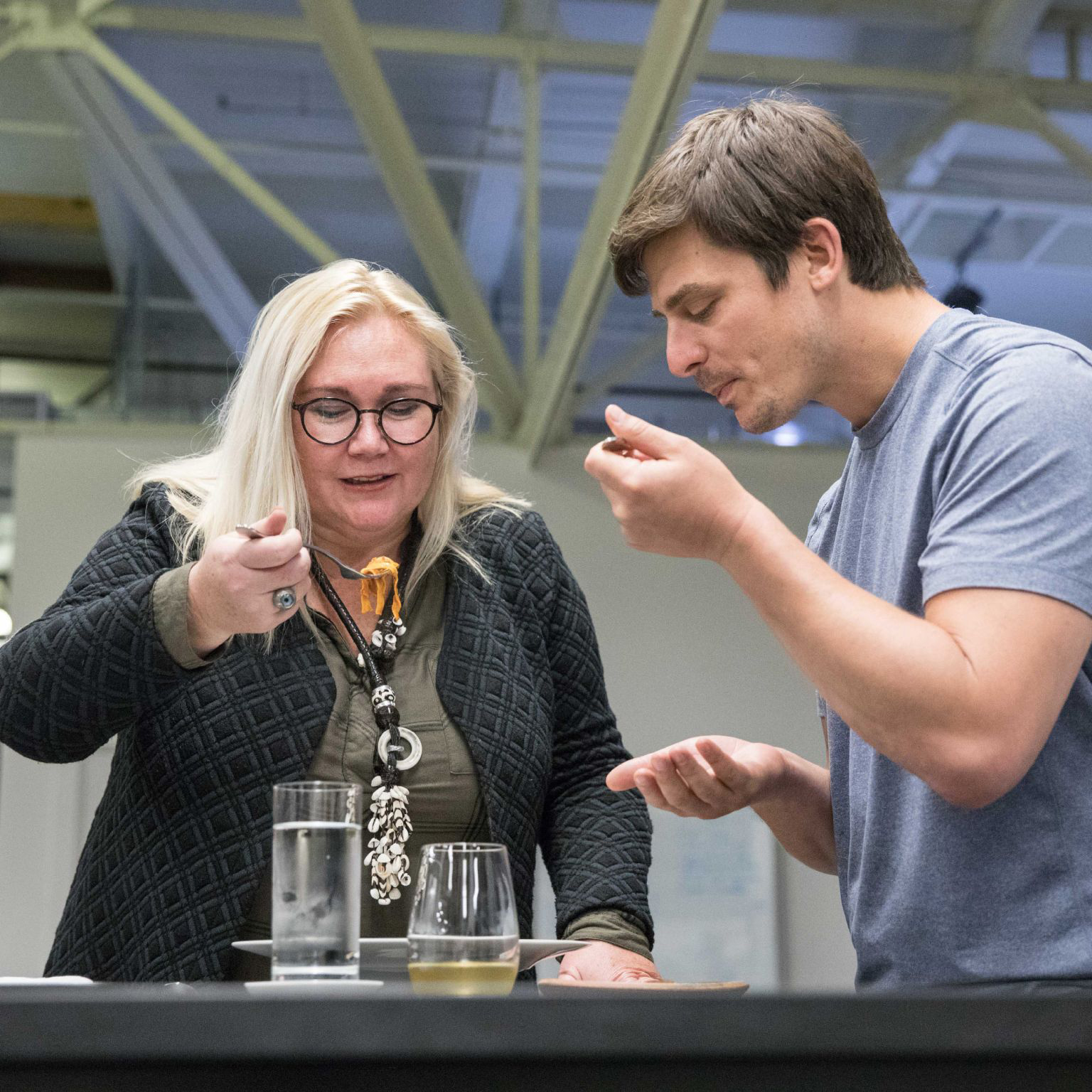
“Josh and his colleagues were really curious as to who this Willem van Eelen was,” she continues. Smiling, she adds, “At the time, I wasn’t really interested in talking with Josh, and it’s funny that when we eventually did talk on the phone, he spent a lot of time telling me about cultivated meat. I was in this strange situation where I had been thinking and talking about this topic – and living with it – for more than 40 years. So, my immediate thought was, ‘Hey, wait a second Josh! Let me tell you about cultivated meat! But we became friends.”
Tetrick invited Van Eelen over to San Francisco and she recalls tasting a duck mousse, and a bolognese sauce, with the media gathered around snapping photographs. “People were asking me what it tasted like, and I guess I thought, ‘What do you think it tastes like?’ It didn’t have the aftertaste of soy or the sweetness of some plant-based products, for instance. It wasn’t just mimicking meat, it was meat.”
Tetrick and Van Eelen also discussed a potential position for her in the USA, perhaps to be an advocate for cultivated meat due to her in-depth knowledge or go after some fundraising. “But they already had Josh and Uma Valeti [head of UPSIDE, known then as Memphis Meats] plus all the big hitters in the Bay Area; they didn’t need me,” she says “And I am a bit like my father,” she confesses. “I don’t like going after funding; I hate it. I am also very European. So, I came up with a different solution.”
Given the Netherlands is actually one of the largest meat producers in the world – as well as one of the biggest exporters of agtech – Van Eelen realized that if she wanted to make an impact, to change something, she would need to do it in Europe, and remain in the Netherlands.
Painstakingly, she started to investigate why there wasn’t much of a high-level focus on cell ag in her country and in Europe, despite the previously mentioned Mark Post having already unveiled the world’s first cell-based burger in 2013.
“When I first started talking with politicians, I was angry because I knew what I wanted them to do, and perhaps I was expecting too much of them,” Van Eelen concedes. “Being angry didn’t get me anywhere. I found there was simply a lack of knowledge and awareness, and they have so many problems on their plates already. So, I changed tact and started educating people in parliament, within the Ministry by working together and learning about their challenges, collaborating to hopefully eventually create an ecosystem around cultivated meat.”
Building the ecosystem
It didn’t happen overnight but Van Eelen – seamlessly taking up her father’s mantle – built that ecosystem by forming organizations such as the non-profit KindEarth.Tech, RESPECTfarms, and Cellular Agriculture Netherlands, while still maintaining her honorary position at what would become GOOD Meat (a subsidiary of Eat JUST).
“If you look around the world today, who is making meat? It’s not the factories, it’s farmers, it’s animals,” Van Eelen says, explaining the concept behind RESPECTfarms. The ambition, therefore, is to help farmers and ranchers diversify their businesses to share in the promise of cultivated meat, to bridge the gap between scientists and the farmers that raise the top-quality animals that need to be sampled to make cultivated meat.
“In the Netherlands, our farmers are very well educated, familiar with cutting-edge techniques, and advanced animal husbandry. So, is it that ludicrous that they might consider a cultivated meat brewery on their farms? We imagine decentralized production with cultivated meat hubs in Scotland, Belgium, Germany, anywhere. Most of the scientists I talk with are more interested in working at this sort of scale and moving on to factory scale from there, rather than the huge scale from the outset. Farmers work hard to make money from every inch of their farm, so it’s not that different to diversifying from cheese, beer, ice cream parlors, and bed and breakfasts to cultivated meat.”
KindEarth.Tech, meanwhile, was established by Van Eelen alongside Olivia Fox Cabane when the alternative proteins sector was a “blue ocean”. “There weren’t really that many events focused on the topic,” she reports. Since launching in 2019, the KindEarth.Tech roadshow has pitstopped in San Francisco, Van Eelen’s hometown of Amsterdam, and Singapore, plus a few virtual events held during Covid-19. “The startups are the stars, not the companies that have already succeeded. Many people are also familiar with our industry maps, put together by Olivia, and we interact with those companies regularly. If we find out there’s something amazing going on, we invite them to speak. We don’t pay them nor do we ask for sponsorship. It’s an impossible model, but it works. And we get a nice mix of students, investors, companies, and people wanting to be in this space.”
Bang up to date
Looking at recent developments, Van Eelen expresses her delight at all the regulatory hurdles falling in such quick succession in the USA. “Of course, I stem from the era where cultivated meat was just a technical hurdle to be straddled. And later, we found out that there’s this massive legal hurdle.”
As we are all now well aware, as of mid-2023, cultivated chicken is regulated in Singapore and in the USA. It’s just a select few companies with a select few products, but it’s a start. Van Eelen is hoping that Europe follows suit soon, and that the Netherlands plays a leading role.
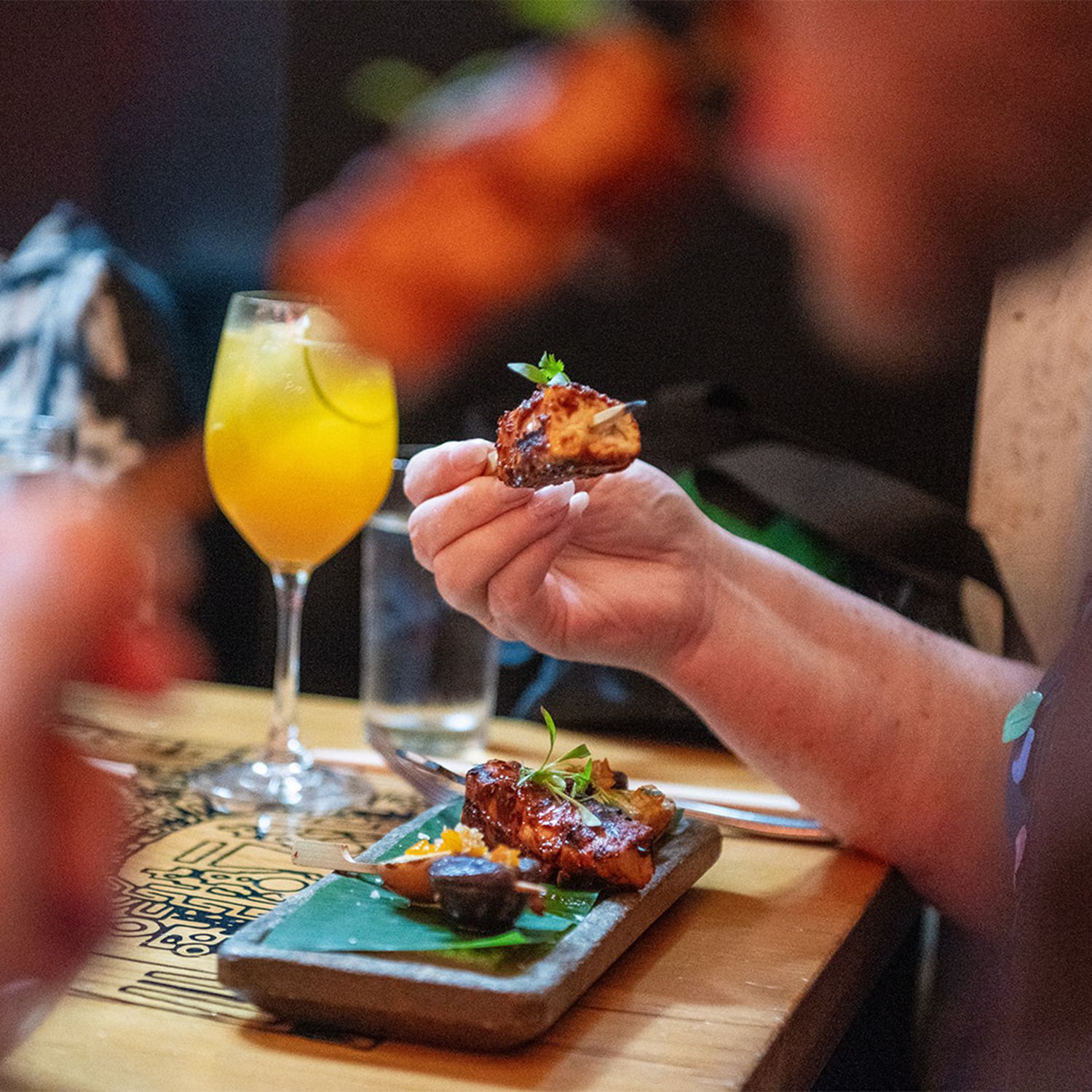
Van Eelen’s home country currently prohibits the sale or consumption of cultivated meat prior to an EU novel foods approval. But there are indications of progress.
In October 2022, the Dutch government announced a record €60 million of funding as part of the National Growth Fund for cultivated meat and precision fermentation, and Van Eelen and her colleagues at the Cellular Agriculture Netherlands (CAN) Foundation, established in 2021, played a leading role in securing the funds. The implementation of the plan has started under the coordination of the CAN Foundation, in collaboration with the Ministry of Agriculture, Nature & Food Quality.
Ultimately, that faith shown by the Dutch government led to the announcement that cultivated meat and seafood can soon be taste-tested under limited conditions in the country. Cellular Agriculture Netherlands has responsibility for implementing what has been called a ‘code of practice’, including hiring a panel of experts to evaluate requests by companies to conduct tastings. “It was significant as it came about from a position of fear, with Brussels saying, ‘No, you can’t do this’,” Van Eelen says. “You can’t bring a product to market without tasting it – that’s a no brainer. It’s a year-long trial and if it works well, the trial will be extended.”
Van Eelen knows from her father’s experience that patience is a valuable asset in the cultivated meat game, so she remains pragmatic. “I don’t think we will do away completely with conventional meat,” she says. “But we do need the addition of precision fermentation and cultivated products. Hopefully, in 100 years, we’ll have a better humanity – one that decides not to use animals for food anymore. Right now, though, we just have to make our way into a huge industry, and make sure that we produce food in a better way.”
And who knows? Perhaps Van Eelen’s son, Kick, will follow in hers and his grandfather’s footsteps and continue the legacy. “It’s a family affair,” she concludes. “But it is an extended family – and even your magazine is a part of it. An amazing, big family trying to steer a freighter on a better course. We call it alternative protein: one day, perhaps we will just call it additional protein.”
If you have any questions or would like to get in touch with us, please email info@futureofproteinproduction.com







